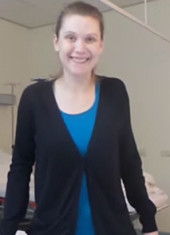joimax® announces new publications with its technologies
Karlsruhe, Germany, September 14th, 2016 – joimax®, the Expert in Endoscopic Minimally Invasive Spine Surgery is pleased to announce another publication on its technologies to be released in “World Neurosurgery” (2016). In the paper called “Transpedicular Lumbar Endoscopic Surgery for Highly Migrated Disc Extrusions, a preliminary series and surgical technique” published by Krzok G et al, with 21 patients who underwent this procedure with the TESSYS® system. The paper follows two Technical Notes by Wagner R et al in which he shows joimax® techniques as surgical rescue solutions in a kyphoplasty complication and another one for the treatment of a thoracic disc herniation, all published in “World Neurosurgery”.
The first Technical Note mentioned above describes the case of a 72-year-old woman with a leakage of the kyphoplasty cement into the spinal canal (a described and known complication), where the joimax® technology was successfully used as a rescue solution to remove the cement and decompress the nerval structures preventing major surgery. The second Technical Note described above reports transforaminal endoscopic foraminoplasty and discectomy for the treatment of a thoracic disc herniation. A 31-year-old woman with severe thoracic back pain over one year was successfully treated by using the transforaminal endoscopic approach. Here also a rather invasive open surgery was not needed.
A more and more growing number of studies shows the outstanding advantages of Endoscopic Minimally Invasive Spinal Surgery, which is reported since years in studies like the prospective Randomized Controlled Trial (RCT) of Ruetten et al in 178 patients and by Hoogland et al in a study with 262 consecutive cases of transforaminal endoscopic spinal surgery, which were both published in Spine 2008, Vol. 33, Issue 9. Another retrospective evaluation with 195 patients of Jasper et al (Clinical Neurology & Neurosurgery 2013, Vol. 115, Issue 10) and a multi-centric MIS prospective registry published by Sclafani et al (IJSS 2015, Vol. 9, Art. 69) with 86 patients, showed also very encouraging results. Beyond that, a special edition of the Journal of Neurosurgery on Endoscopic Spine Surgery was released in February 2016 (JNS 2016, Vol. 40, No. 2).
“Working with Endoscopic Spine Surgery for more than 12 years until now (about 2400 TESSYS procedures under analog-sedation in daysurgery) and seeing its evolution is just amazing and I wonder where we will be in five or ten years from now on”, says Menno Iprenburg, MD from Veenhuizen, NL, who continues to be involved in many of these studies. Albert Telfeian, MD, PhD from Brown University, RI is very happy about the actual hit rate on PubMed when searching for endoscopic spinal surgery: “to date we got a rate of 2,730 papers on http://www.ncbi.nlm.nih.gov/pubmed/?term=endoscopic+spinal+surgery and I am really excited how many indications are treatable with endoscopy already today” he says. “Shortly another RCT study swill be published by Gibson et al demonstrating the quality and great success rate of endoscopic spine treatments with a high adoption rate especially in Asian countries, in some countries more than 50% growth per annum”, says Wolfgang Ries, founder and CEO of joimax®.
About joimax®
Founded in Karlsruhe, Germany, in 2001, joimax® is the leading developer and marketer of complete systems for endoscopic minimally invasive spinal surgery. With TESSYS® (transforaminal), iLESSYS® (interlaminar) and CESSYS® (cervical) for decompression procedures, Multiuse RT (e.g. for rhizotomy) or with EndoLIF® and Percusys® for minimally-invasive endoscopic assisted stabilizations, proven endoscopic systems are provided that, together, cover a variety of indications.
In procedures for herniated disc, stenosis, pain therapy or spinal stabilization treatment, surgeons utilize joimax® technologies to operate through small incisions – under local or full anesthetic – via tissue and muscle-sparing corridors through natural openings into the spinal canal (e.g. intervertebral foramen, the “Kambin triangle”).












